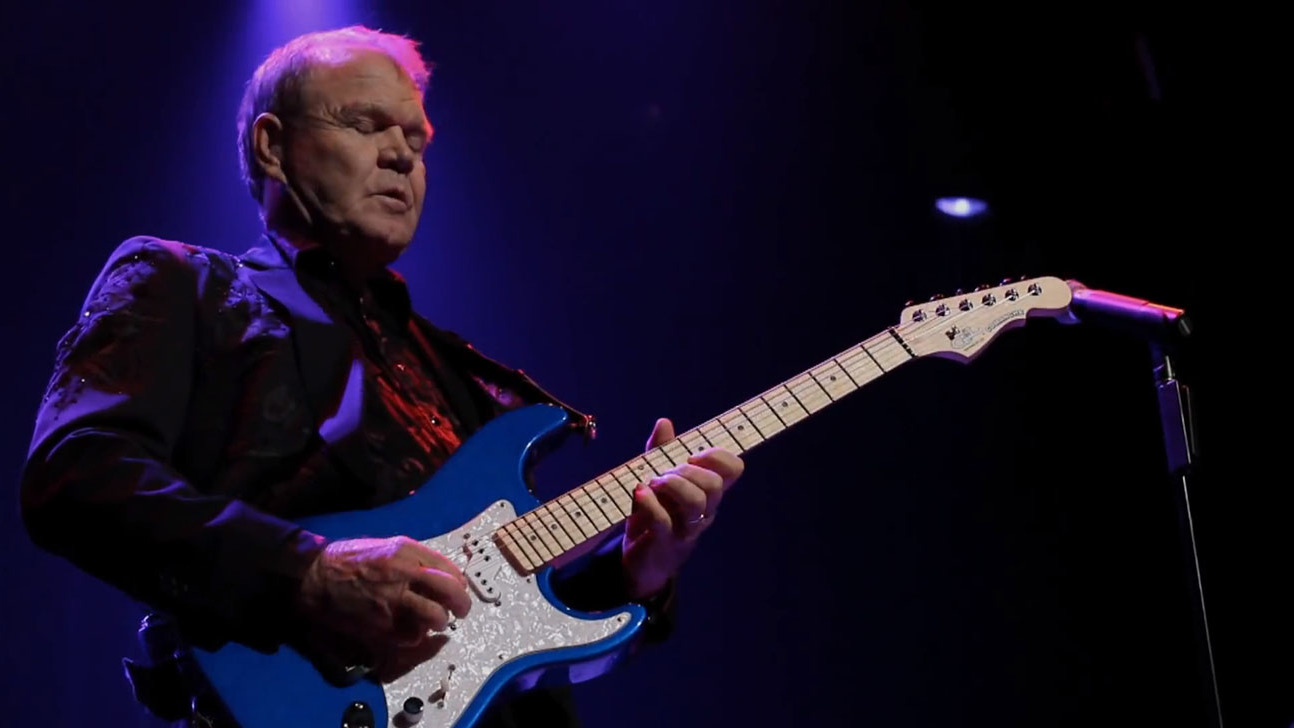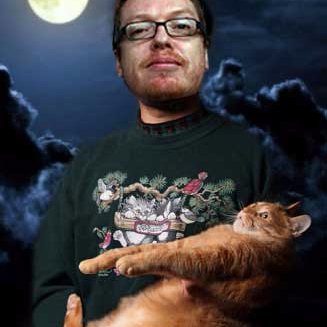As so often, Bruce Springsteen said it best. “A beautiful singing voice,” he said. “That pure tone. The simple presentation. It was never fancy. He wasn’t singing all over the place. It was simple on the surface… but there was a world of emotion underneath.”
Glen Campbell had a voice that made listeners feel nostalgia for places they’d never been to and an affinity with characters they’d never met. It was a voice that ached with yearning despite being outwardly unadorned. It was an everyman voice: you weren’t witness to the performer’s longing, but instead were acutely conscious of your own.
He was also a guitarist of rare genius. Before the solo hits came he was part of the Wrecking Crew, the famed group of Los Angeles session musicians who propped up so many successful acts in the 1960s. He played on tracks by The Hollies, The Monkees, Elvis Presley, Bobby Darin, Rick Nelson, The Byrds, Merle Haggard, Lee Hazlewood, Nancy Sinatra, the Righteous Brothers and dozens of others. Where there was a hit, there was Campbell. He played multiple guitar parts on The Beach Boys’ classic Pet Sounds, having filled in for Brian Wilson on tour two years earlier, playing the bass notes and hitting the high harmonies.
In 1967 his own career took off as he began working with songwriter Jimmy Webb, a genius in his own right and a writer of extraordinary, ambitious melodies whose compositions found a perfect foil in Campbell’s sentimental delivery. The hits came: Webb’s Wichita Lineman, By The Time I Get To Phoenix, Galveston and John Hartford’s Gentle On My Mind and are amongst the most perfect recordings ever made. “He had exquisite taste in songs,” said Webb, “but he could sing anything. You can hear another person sing the same song with the same words but it doesn’t have the same effect. It’s something that he was really born with.”
He became a TV star. The Glen Campbell Goodtime Hour ran for three years, and in 1969 premiered the first US showing of The Beatles final live performance, from the rooftop of the Apple Corps building in London. Other guests included Cream, Three Dog Night, Ray Charles and a host of rising stars from the world of country music.
And he appeared in the movies, starring alongside John Wayne as he won an Oscar for True Grit and with legendary quarterback Joe Namath in Norwood, a comedy which showcased Campbell’s down-home humour perfectly.
The chart success dried up, although covers of Larry Weiss’s Rhinestone Cowboy and Allen Toussaint’s Southern Nights were global hits in the mid-1970s. He became a tabloid fixture as the the very public breakdown of his tempestuous relationship with singer Tanya Tucker hit the headlines, but finally found happiness with Kim Woollen, a Radio City Music Hall dancer, in 1982. He became a Baptist, and quietly released a series of devotional albums that, while not troubling the Billboard statisticians, featured some of his strongest, most heartfelt performances.
Diagnosed with dementia in early 2011, he faced the illness with humour. “I can still jump as high”, he told his doctor, self-effacing to the last. “I just don’t stay up in the air so long.” And when told he was being awarded a Lifetime Achievement Grammy, he snapped, “Lifetime? I ain’t done yet!”
He continued to record. Ghost On The Canvas and See You There might have been an attempt to copy the late career trajectory of Johnny Cash, a ploy to bestow a degree of grizzled, elder-statesman gravitas onto a performer by having him perform songs that somehow reflected his world-weariness. But Campbell’s extraordinary lightness of touch ensured that the recordings — which featured the likes of Billy Corgan and Paul Westerberg — weren’t riven with gloom. Instead, he did what he’d always done: he took other peoples’ songs and made them more lovely. That simple voice. That modest, pitch-perfect delivery. That miraculous connection by emotional osmosis.
And he went on tour, his old band replaced by the most familiar of fellow musicians: his family. Joined onstage by daughter Ashley and sons Cal and Shannon, he pulled out the hits for one last spin around the dancefloor. It was erratic — when this writer saw Campbell at London’s Royal Festival Hall in September 2011 he sometimes seemed unsure of his place in the set. But when the music started and the muscle memory kicked in, it was flawless. Some of it was incredible.
“Part of me was afraid that people were going to the shows because they thought it was a stock car race, that they were going to see a crash,” said Campbell’s tour manager Bill McClay. “And maybe I should have more respect for my fellow human beings. But it turns out people really wanted to be there to see something they may not be able to see again.”
We won’t.
RIP, Glen Campbell.

